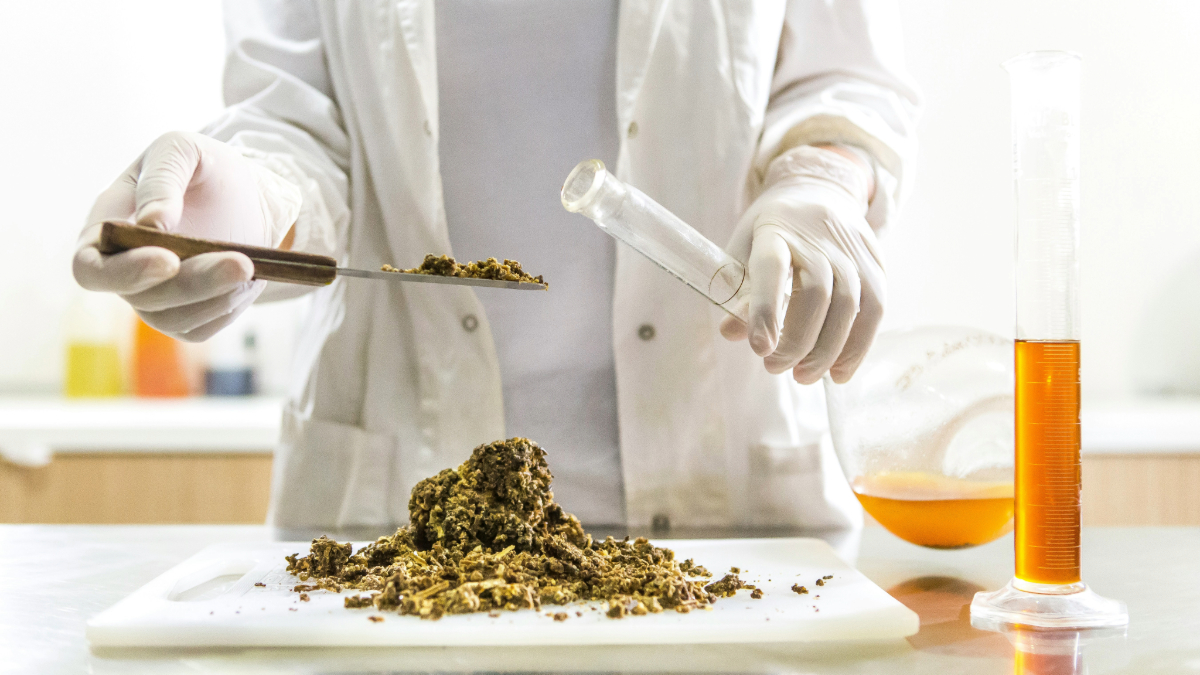Propolis: A Closer Look at Its Uses and Benefits
Updated: January 24, 2025

Propolis is a resin-like material made by bees from the buds of poplar and cone-bearing trees. Honey bees produce it by mixing saliva and beeswax with exudate gathered from tree buds, sap flows, or other botanical sources. It is used as a sealant for unwanted open spaces in the hive. Its color varies depending on its botanical source, with dark brown as the most common. Propolis is sticky at and above 20 degrees centigrade, while at lower temperatures, it becomes hard and brittle.
The composition of propolis can vary depending on the location of the bees and what trees and flowers they have access to. For example, propolis from Europe won't have the same chemical makeup as propolis from Brazil. Propolis is rarely available in its pure form. It is usually obtained from beehives and contains bee products. The majority of the compounds in propolis are polyphenols, which are antioxidants that fight disease and damage in the body.
Specifically, propolis contains polyphenols called flavonoids. Flavonoids are produced in plants as a form of protection. They are commonly found in foods thought to have antioxidant properties, including fruits, green tea, vegetables, and red wine. Propolis seems to have activity against bacteria, viruses, and fungi. It might also have anti-inflammatory effects and help skin heal.
As the trend of using organic products in treatment is getting more popular, propolis stands out as a product with distinctive features. Chemists and manufacturers are researching and applying it in medicine formulations for use, particularly in the treatment of wounds, immunity boosting, and general oral maintenance. This underlines the increase in its use as a commodity between herbal and chemical medicines.
Therapeutic Uses of Propolis
Propolis is used for canker sores and infections caused by bacteria (including tuberculosis and upper respiratory tract infections), viruses (including HIV, H1N1 "swine" flu, and the common cold), fungi, and single-celled organisms called protozoans. Propolis is also used for nose and throat cancer, warts, and gastrointestinal (GI) problems, including Helicobacter pylori infection in peptic ulcer disease.
People sometimes apply propolis directly to the skin for wound cleansing, genital herpes, cold sores (herpes labialis), vaginal swelling (vaginitis), and minor burns. Propolis is also used topically as a mouth rinse to treat painful mouth sores and inflammation (oral mucositis) and thrush (oropharyngeal candidiasis) and to improve healing following oral surgery.
Beyond its traditional uses, propolis gets integrated into modern healthcare products in various ways. Its uses include the development of topical agents for the management of first and second-dipolar injuries, such as small burns and surgical cuts. The most important flavonoid in propolis is pinocembrin; it has made it possible to use it to enhance the healing processes of surgical operations.
In manufacturing, propolis plays the role of being used as one of the ingredients in the manufacture of cosmetics. It is also known that some producers of chewing gums use propolis to produce propolis chewing gums. Propolis is used by some bow makers and repairers (of violin, viola, cello, and bass) as part of the varnish. Some workers use it to seal the surface of newly made bridges.
Uses and Effectiveness
Propolis is thought to have antibacterial, antiviral, antifungal, and anti-inflammatory properties. So, the bee product appears to protect from some bacteria, viruses, and fungi.
- Canker Sores: Taking propolis by mouth daily for 6-13 months reduces canker sore outbreaks. Some of the anti-cancerous effects of the substance include keeping cancerous cells from multiplying, reducing the likelihood that cells will become cancerous, and blocking pathways that keep cancer cells from signaling to each other.
- Diabetes: Taking propolis may improve blood sugar control in people with diabetes. However, it doesn't seem to affect insulin levels or improve insulin resistance.
A Natural Compound for Modern Healthcare Needs
Propolis has a special compound called pinocembrin, a flavonoid that acts as an antifungal. These anti-inflammatory and antimicrobial properties make propolis helpful in wound healing. One study found that propolis can help people who have had traumatic burns heal faster by speeding up new healthy cell growth.
A topical propolis alcoholic extract was more effective than a steroid cream in reducing mast cells in oral surgery wounds. Mast cells are associated with inflammation and slowed wound healing.
Propolis mouth rinses have shown the potential to reduce gum bleeding in periodontitis patients. The growing adoption of propolis in oral care products highlights its therapeutic promise for addressing common dental and gum health issues.
Safety and Considerations
Propolis is possibly safe when taken orally or applied to the skin. However, it can cause allergic reactions, particularly in people who are allergic to bees or bee products. Lozenges containing propolis can cause irritation and mouth ulcers.
Propolis may also cause its own allergic reaction when used for a long time. The typical allergic reaction is an eczema-like skin breakout.
Final Thoughts
Propolis is a natural substance with many health benefits. From fighting infections to helping wounds heal, it has been used for centuries and is now finding a place in modern healthcare. Its antibacterial, antiviral, and anti-inflammatory properties make it a valuable ingredient for products like ointments, mouth rinses, and dietary supplements.
For businesses, propolis offers opportunities to create innovative products that meet the growing demand for natural and sustainable solutions. Whether it's in healthcare, cosmetics, or even oral care, propolis is proving to be a versatile and effective resource.